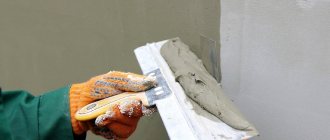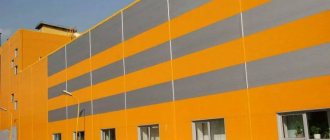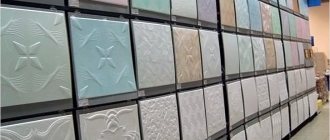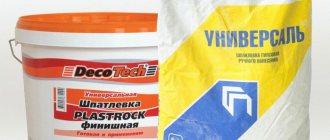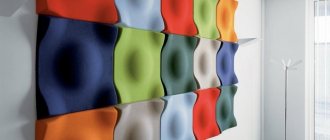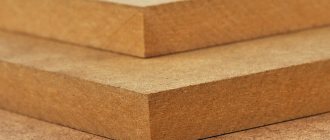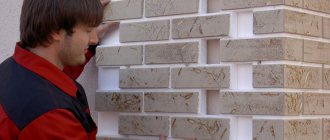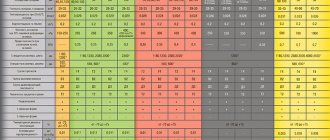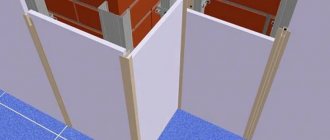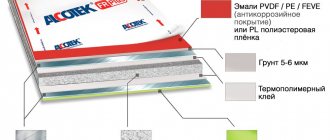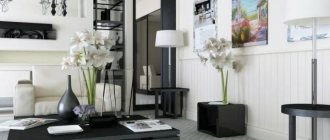PVC panels are a long-known and popular material for interior decoration. They are used not only for walls, but also for ceilings. There is a huge variety of plastic panels on sale, which is easy to get lost in, but if you look, they can all be divided into several types. Let us consider in detail the existing types and sizes of products, as well as how to choose a quality product.
Technology and installation methods
The planks are mounted using the tongue-and-groove principle with a contact depth that allows for quick assembly and disassembly of the covering. There are two main installation methods: on a frame (sheathing) and without it. In the first case, a metal base with rectangular openings is assembled. In the second case, such lathing is not needed; only approximately smooth walls and a base of glue or cement are enough. The disadvantage of this option is the difficulty of replacing individual elements. The ceiling is finished only using a frame method, and this is due to the possibility of hiding communications and placing recessed lighting fixtures, for example, spotlights, in some places. The material is glued to the walls to create the most durable surface. Plastic structures last longer if they do not bend from pressure at the edges. If the frame method is used, it is better to glue the plastic to pre-attached drywall.
Types of plastic panels
There are different material options. The surface can be plain (white or colored), as well as with a pattern. For the ceiling, light shades are usually chosen that increase volume.
Patterns should be treated with caution - they can quickly become boring over a large area. If you choose a pattern, it is better to choose an unobtrusive one, without pronounced contrast.
According to the type of image application, they are distinguished:
- Painted on top is a cheaper option, but the layer is unstable and peels off quickly, and also smells unpleasant when heated (for example, on a sunny balcony). For such panels, softer plastic is used, which is why the structure is easily dented.
- With thermal printing - similar to the previous one, but with more design options.
- Varnished - the protective layer makes the pattern more durable, but gets scratched over time.
- Laminated - covered with film. They differ in texture, are resistant to ultraviolet radiation (do not fade, do not smell). The plastic is denser, thicker and more durable, and the film additionally strengthens the surface. Often imitates different types of wood.
- Decorative - with a relief and pattern reminiscent of brickwork, stone, tiles, etc. The texture is chosen so that the edges meet each other without noticeable boundaries. The result is the impression of a single surface. The most expensive type, mainly used for walls.
The last type of PVC ceiling panels can have different smoothness, laminated ones are always matte, and the rest are glossy. This affects the perception of the ceiling. Shiny appears higher, but glare from direct light sources is unpleasant to the eye.
In addition, the panels differ in shape. For some, due to the ribs at the edges, there is a gap between the parts. They often come in sizes similar to wood trim. This option is even called plastic lining.
With seamless panels, the gap is much smaller, since they are positioned end to end. Such products are usually wider.
Another variety is panels that imitate a slatted ceiling. There are longitudinal grooves on the surface that divide the panel along its length (two-section or three-section are more common). Between the stripes there may be thin inserts of a different color (for example, chrome or imitation gold).
Selection and acquisition
When buying ceiling slabs, give preference to special hardware stores. There you can buy all the fasteners for installing PVC panels, and professional consultants will tell you about the nuances of installing suspended ceilings.
Carefully inspect the surfaces of the slabs for cracks, chips, nicks and other damage.
A high-quality product - geometrically correct in shape, without stiffening ribs protruding from the surface, and does not crack when bent. There should be no traces left after pressing.
The basis for the selection and installation of panels is the layout of the room. If the room is small, use products of minimal length and width. For spacious rooms, you need to purchase three-meter slats.
The best manufacturers of PVC panels for ceilings
When purchasing any product, we attach great importance to choosing a reliable manufacturer. There are a lot of them on the modern construction market. Let's focus on the best:
- Venta is a leading company from Belgium. Venta produces PVC ceiling panels with various parameters and designs. Not long ago we launched the production of slats with digital printing applied to the surface.
- Forte is an Italian manufacturer that has been on the market since 1969. The production of products is based on the use of modern high-tech equipment. A wide selection of different shades allows buyers to implement a suitable ceiling design from PVC panels in their apartment.
- LLC "Planet Plastic" is a company from Moscow, operating since 2001. Production is carried out using foreign equipment and foreign raw materials. The company presents consumers with more than 150 different variations of finishing elements.
- Ural-Plast LLC is a manufacturer from Magnitogorsk, whose quality products are also the result of the use of foreign equipment. In addition to standard PVC panels, this company produces products with original designs.
- AnV-plast LLC is a company from Krasnodar. She started her activities in 2001 and achieved success in a short time. The company supports domestic manufacturers by purchasing raw materials for production from them. The competitive advantage of AnV-plast LLC is that the price of its products is much lower.
Cost and calculation of PVC panels for ceilings
To determine the required number of plastic panels for the ceiling, multiply the length and width of the room. Divide the resulting figure by the area of one PVC panel for the ceiling. You will get the number of planks per room. Add 10-15% to the value for possible damage to the material during transportation or installation.
If we talk about price, the average cost for one panel is approximately 150 rubles. It depends on the external characteristics of the product. Thus, a PVC panel 3000 mm long and 250 mm wide can be purchased for 100 rubles. , and a bar with a length of 6000 mm and a similar width - already for 200 rubles.
Payment for the services of craftsmen who carry out ceiling finishing will be approximately 450 rubles. for 1 sq. m. If you decide to decorate the ceilings in your house with PVC panels yourself, you will have to incur costs associated only with the purchase of materials.
Which panels are better to choose?
The design of a bathroom made of plastic panels begins with their correct selection. Today there are many different types of PVC panels for the bathroom; they differ in shape and size, as well as in texture and method of fastening.
Based on their shape, there are 3 types of plastic panels:
Rack and pinion. In appearance they resemble ordinary lining. They come in different widths and are installed both on the frame and with glue. The slats are convenient for finishing bathrooms of non-standard shapes with various angles and protrusions. In addition, with their help you can visually raise ceilings (if installed vertically) or move walls apart (if installed horizontally). The width of standard products is in the range of 10-30 cm, height - 90-300 cm.
Tiled. A budget alternative to tiles has the same shape - a square. They often imitate mosaic, marble or concrete. The main advantage of this type is the integrity of the structure, which is achieved through special fastenings on the tiles. The sizes of the tiles vary from 10*10 cm, but 30*30, 100*100 cm are considered standard.
Leafy
The larger the material, the fewer joints, and this is important for the bathroom. After all, moisture penetrating into joints provokes the formation of fungus
In addition, even a large bathroom with large sheets can be renovated in just a few hours. The leaf width reaches 50 cm, and the length is 260-300 cm.
Conclusion: For bathroom design, decide on your priorities: visual correction of the room, absence of joints or speed of installation. This will tell you the ideal shape of the PVC panels.
By thickness they are distinguished:
- Up to 0.5 cm. This thin and fragile material is best used for ceiling decoration.
- 0.8-1 cm. Thick panels are more durable and suitable for wall decoration. In addition, they are protected from mechanical stress and fading in the sun.
Conclusion: For wall cladding in the bathroom, use planks 0.8-1 cm thick.
The photo shows a bathroom decorated with black plastic panels
PVC panels also differ in surface treatment technology and appearance:
- Offset printing. UV resistant, protected from moisture, scratches and other damage. Reinforced with a varnish coating.
- Thermal printing. There is no protective varnish coating, the design can be easily damaged and even erased.
- Lamination. Applying a film with a relief surface to the panel is considered the most durable option and has maximum resistance to damage.
Conclusion: It is recommended to use offset printing in the bathroom, and it is better to install laminated slats around the bathroom itself.
Another difference between PVC panels is the connection method.
- Seamless. Most often these are ceiling slats. They assume installation as close to each other as possible, the seam becomes almost invisible.
- Rustic. Otherwise - lamellas with a chamfer. They also interlock with each other, forming a single web. They decorate the walls and ceiling.
- Embossed. The uneven coating of the plastic panels masks the seam, making the space appear seamless. This is the most suitable option for walls, and it is also resistant to damage. But the cost of such finishing will increase significantly.
Conclusion: Decorate the walls in the bathroom with relief or rusticated panels.
There are 2 mounting methods:
- Frame. The slats are installed on a wooden or metal sheathing. The main advantage of the method is that there is no need to prepare the walls. In addition, you can hide communications in the frame - pipes, ventilation or wires. The disadvantages are the cost (the frame can be more expensive than the planks themselves) and a reduction in the bathroom area by 5-7 cm.
- Frameless. The panels are attached directly to the wall using glue, screws or staples. Suitable only for flat walls and makes it difficult to replace 1-2 slats if necessary. But at the same time it does not make the room smaller and allows you to save time and money on the frame.
Conclusion: Choose the installation method based on the size of your bathroom and the smoothness of the walls in it.
To summarize - when choosing PVC panels for a bathroom, first of all pay attention to the following nuances:
- thickness from 0.8 cm;
- offset printing or lamination;
- raised lamellas or chamfered;
- availability of an environmental safety certificate;
- number of stiffeners - the more, the better;
- serviceability of lock connections;
- quality of coating and correct joining of the pattern.
Coating options
In addition to ease of installation, this finish has another advantage - a variety of color and texture options. PVC ceiling panels can be either matte or shiny, painted in a single color, or serve as an imitation of various natural materials. Particularly popular are those colors that imitate wood and stone.
If the part has a matte white surface, this is the most inexpensive variety of this material. It is 10 centimeters wide and most of all looks like clapboard. That’s what they are called – plastic lining. Such planks are not particularly beautiful, but their main advantage over others is their very low cost.
Another thing is painted options coated with a special varnish or film. Here the choice of colors is very wide - from simple solid colors to those imitating the pattern of a wooden board or marble surface. They cost more, but the dimensions of such PVC ceiling panels will be larger - 25 centimeters wide as standard. This makes it possible to assemble a smoother surface, with a minimum number of seams.
Seamless coatings are assembled from the most expensive variety of these slats. Their edges are made in a special way, which allows you to connect individual parts into a continuous plane, on which the seams between the individual fragments are almost invisible.
The most rare are planks with non-standard widths. Sometimes you can even find whole sheets of PVC. The advisability of using this type of plank is determined in each specific case separately, but there are no situations when wide parts cannot be replaced with narrower ones.
PVC panels: areas of application
This finishing material is universal. It is used in rooms with normal or high humidity, for walls or ceilings. The only limitation of use is the low temperature - in the cold, PVC becomes brittle and breaks with little physical impact.
Finishing a bathroom and toilet with plastic is not difficult. At the same time, imperfections and unevenness of the walls are hidden. You can also hide protruding water supply or sewerage pipes - in this case you will have to assemble a box from a metal profile or a frame from timber.
Kitchen aprons along the work area made of plastic look aesthetically pleasing and beautiful
PVC sheet panels with artistic design are suitable for an apron in the sink area or a work area in the kitchen. These are glued to the wall and do not require a frame. They are easy to clean, but do not tolerate the use of abrasive cleaning products.
PVC kitchen aprons
Interior ideas with PVC ceilings
Plastic ceiling panels are an inexpensive but quite practical way of finishing. The frame structure is quickly assembled and lasts a long time. And thanks to its resistance to temperature and humidity changes, it is suitable for all types of rooms.
Types of plastic wall panels
Based on the type of connection between the panels, they are divided into three categories:
- seamless lamellas;
- relief panels;
- plastic strips with chamfer.
Seamless slats
The tongue-and-groove connection allows the installation of a continuous covering
Invisible panel joints are ensured by a tongue-and-groove locking system.
One panel with its side protruding edge fits into the groove of the next lamella, due to this it is formed almost as a continuous cladding plane.
It is not recommended to mount panels directly to walls. Spending time and materials on obtaining a perfectly flat surface of the fence in order to then cover it with cladding is not worth it.
Relief panels
On its side the panel has a thin edge that fits completely into the groove of the next strip to a width of 5 mm.
Vertical grooves on the finishing plane visually form the appearance of a fence made of wooden boards (lining).
Plastic panels with bevel
Panels of this type can be quite wide. The side surface of the lamella ends with a decorative strip (chamfer). The connection method is similar to joining relief panels.
Features of the selection and installation of PVC panels on the ceiling
Selection of panels and rules for their installation on the ceiling:
Connecting the guide profile to the main one when installing the frame
It is necessary to select panels based not only on their appearance, but also on their dimensions . Plastic ceiling panels, the dimensions of which were announced earlier, must be such that during installation there are as few scraps as possible. For example, if the length (width) of the bathroom is 1.5 m, then it is advisable to use panels 3 m long. Then, by cutting them in half, you can avoid wasting panels along the length. Accordingly, the width of the panel should also be chosen as a multiple of the room.
- Installation of PVC panels on the ceiling is carried out in two ways - using the panels as finishing for a ceiling made of moisture-resistant plasterboard, or directly installing the material on a frame system. From the point of view of reliability, the first method is more preferable, while many consider the second method to be more rational and less expensive.
- According to the second method, a frame structure consisting of guides and load-bearing metal profiles is attached under the ceiling (it is not recommended to use wooden beams for lathing in the bathroom), after which plastic panels are attached to it.
Advice! If the bathroom is oversized, then additional fastening of the frame to the ceiling may not be necessary, since the weight of the structure will be quite low, and the guide profiles will support it without any problems.
Covering the ceiling frame with plastic panels
- Under the ceiling, at a distance of about 10 cm from it, a guide profile is attached along the perimeter of the room in a single strictly horizontal plane . The main profile strips are inserted and secured into it parallel to one of the walls across the future location of the panels using self-tapping screws. Then the panels are also attached to the finished frame with self-tapping screws, connecting them together using a tongue-and-groove system. After the sheathing, the platbands (corners, plinths, etc.) are laid.
Recommendations for working with plastic when finishing
If the wall is flat, then the material can be attached directly to it. It makes sense to make a frame when you need to cover up old finishes (wallpaper, paint, tiles) or level a wall without plaster.
In addition, the lathing improves sound insulation, helps retain heat, and leaves space for ventilation behind the plastic.
It is economical and easy to make a base from wood. Modern antibacterial compounds contribute to the long service life of wood structures. The bars are installed parallel to the direction of the PVC panels, every 50-60 cm.
The frame is also made from U-shaped plastic profiles. Its advantage is that it is insensitive to moisture, lightweight, does not deform due to temperature changes, and is not electrically conductive.
The profile must be secured in increments of no more than 30 cm, with self-tapping screws or dowels every 0.5-1 m. To join the U-shaped parts together, cuts are made at 90˚, 45˚, 30˚. To secure the plastic, you will need clamps.
To work with panels you will need moldings:
- internal and external corners;
- joints;
- the edges; baseboards;
- finishing elements;
- F-profiles.
Living rooms
If treated with an antiseptic, then the frame in the living room can be made from wooden beams.
The premises are decorated with wood, stone, and white brick. Use decorative, laminated or mirror plastic.
One of the walls can be decorated with PVC material of other shapes. Use rectangular or square structures measuring 0.3-0.98 m, highlight the seams.
Bathroom and toilet
For a bathroom, it is better to make a frame from a galvanized profile or plastic. The material is more suitable without a relief - high humidity can cause mold or mildew, and the textured surface is difficult to clean.
Bathroom panels go well with ceramic tiles, textured plaster, or paint. The main thing is to choose the right shades. It will work out well if you alternate the width and contrast of the elements.
Prints and patterns of different colors will help you create an original design. PVC panels for the bathroom go well with a slatted ceiling, into which mirror inserts can be made.
Kitchens
Economy panels (panels at low prices) can be an inexpensive alternative to ceramics for kitchen decoration.
You can choose combinations of brick and natural stone, mosaic, pattern or ornament.
There are tiled modular options from which images are made; patterns can be combined to decorate the entire kitchen or its individual zones.
A few additional tips:
When purchasing plastic material, you should pay attention to the absence of surface flaws and crumpled joints. There should be no translucency at the stiffeners. Tears and cracks should not form if you lightly press the product. Select the width of the panels so that there is less waste
For small apartments, using a panel with a width of 500-600 mm is impractical. The quality of the material can be checked by bending it. There should be no breaks or cracks. In most cases, the more expensive the material, the better it works. Leave ventilation holes (from fungus and mold).
If you want to make lighting on the ceiling from PVC panels or lamps built into it, it won’t hurt to mark and prepare the holes in advance.
Frame installation
The first thing to do is find out the lowest corner in the room. To do this, the height of the ceiling is measured at the corners. In that corner there is a 5 cm deviation from the ceiling. From this point, using a laser level along the perimeter of the walls, lines are drawn on which the profile guides will be fixed.
- Now you need to cut and secure the profile to the ceiling. It is cut to the width of the room and mounted orthogonally from the wall of the room.
- Here you need to take into account that PVC panels are installed along the room. That is, orthogonal to the wall with the window.
- After all, this way you can prevent the joints between the panels from being visible. When the room is large, first markings for hangers are drawn on the ceiling.
They are mounted and secured to the base of the ceiling with self-tapping screws on plastic dowels. Then the profiles are installed clearly horizontally. The frame must be assembled in one horizontal plane. Here the ceiling profiles with their edges should fit into the guide profiles. At this stage, the frame is already prepared.
Tips and tricks for working with panels
It is better to install the planks using the efforts of two people, primarily when it comes to covering the ceiling or gluing baseboards. When drilling and cutting panels, you need to protect your eyes with special glasses. Cut the slats with a hacksaw or hand saw. Skirting boards are attached to plates using glue - one narrow strip is applied to the wall, the other to the finishing material. The nails in the panel are driven carefully and slowly, because the dents that form on the PVC cannot be leveled out. Installation of panels begins from the left corner of the room. The first step is to install the inner corner. The panels are mounted on the wall after installing the upper and lower plinths, since they need to be inserted into their connectors. Remove dirt and plaque from the finished coating only with a soap solution. Aggressive cleaning agents cause yellow discoloration over time.
A few more tips:
- The selection of the ideal size takes into account the parameters of the sockets: unsuccessful calculations will lead to falling out or the formation of bends.
- The surface without a frame should be pre-primed.
Features of ceiling plastic panels
It is clear that the use of polyvinyl chloride for ceiling decoration can be perceived differently; many apartment owners believe that this is a rather risky undertaking, primarily due to the flammability of plastic. In fact, this is not as critical as it might seem at first glance. In any apartment or living space there will always be plenty of flammable interior items and furniture, including those made of PVC materials.
Polyvinyl chloride is no worse or better than other plastics, but before you make your choice in favor of PVC panels, you should know about some of the features of their design:
- A decorative plate or lamella made of PVC is a hollow panel, inside of which, in increments equal to the thickness of the material, stiffening ribs are soldered;
- The plate is made by extruding the melt through profiled dies - dies, so the structure is cast and hollow, without pressed or glued seams;
- Standard PVC panel cladding for ceilings is produced in the form of narrow and flat panels, up to 6 m long.
On the side end surface of the lamella there is a special locking profile, with the help of which several PVC slabs can be connected into one plane without forming a through joint.
Important! The long length of the lamellas and a considerable range of models of different widths make the panels convenient for installing ceilings of various sizes. In this sense, PVC panels are much more convenient for installation on the ceiling than analogues, MDF, OSB and decorative plywood
Wood effect vinyl planks
What we pay attention to
Fastening of PVC panels is carried out in a stacked manner, when one lamella is joined to another with locks and at the same time laid on a wooden frame or profile sheathing. The plastic itself is attached using metal clips, glue or regular wallpaper nails.
In addition to PVC panels for flooring, there is a fairly large number of PVC slabs and lamellas on the market intended for finishing walls and facades. This material is much thicker and stronger than that used for ceiling cladding.
Important! For continuous cladding of floors, lamella materials are used. On the market you can find square slabs 60x60 cm, used by some craftsmen for gluing to the ceiling, similar to polystyrene or polyurethane
In fact, these are parts for Armstrong type suspended ceilings. They do not have locks and are not used for self-cladding the ceiling surface.
PVC panels intended for ceiling finishing are somewhat thinner than wall panels; it is believed that, due to the “hardened” plastic, they are less durable and require more careful handling, especially when cutting or transporting. In addition, ceiling cladding is almost always manufactured in either glossy or semi-matte format. You can, of course, install a PVC wall panel on the ceiling, but the appearance will not be so expressive, so such experiments are best left for balconies and utility rooms.
Unpleasant features of PVC ceiling cladding
It is clear that the use of polyvinyl chloride guarantees the absence of such unpleasant phenomena as watering, swelling of the cladding due to condensation; there is no mold or mildew on PVC panels; the polymer tolerates washing and cleaning well with modern dishwashing and wall washing products.
But PVC has a couple of features that it is better to know about in advance.
- Firstly, the material does not allow air to pass through at all, so covering the ceiling with PVC panels worsens the atmosphere of the room. Water vapor is not removed as effectively as with conventional painted or whitewashed ceilings.
- Secondly, the PVC surface perfectly reflects sound and noise without dissipating it or reducing the intensity of the sound wave. Therefore, if you line, for example, the ceiling in the kitchen with panels, then all the sounds and noises that accompany the cooking process will be clearly audible in the farthest corner of the apartment.
Foam ceiling tiles
Foam tiles are materials for ceiling finishing that have not lost their relevance and popularity. This is due to their low cost, simple fastening and excellent decorative capabilities.
- Often, foam panels come in white with patterns and designs on the front.
- It can be painted in the desired color. In order for the panels to look on the ceiling as a single whole, you need to purchase models without seams.
Installation of foam tiles is done using liquid nails. In this case, there is no need to save money, because the better the glue, the stronger the elements will stick to the ceiling.
Design and properties of plastic panels
The products consist of two plates interconnected by stiffening ribs. One of the plates is the front side, which has a decor that matches the designed model. PVC panels are specially made so that their connection is strong and invisible. For this purpose, their side edges are equipped with projections and grooves.
Plastic panels have the following advantages:
- Presentable appearance. Modern design has made it possible to create surfaces with a high artistic component.
- Waterproof. Polymer slats do not absorb moisture at all and are resistant to mold.
- Sufficient mechanical strength. This factor makes it possible to wash finished surfaces using a certain amount of pressure.
- Flexibility, which allows you to avoid breakage of the rails during transportation and installation.
- Low specific gravity. There is no additional load on the load-bearing surface.
- A variety of parameters, textures and colors of products. This quality allows the imagination of designers to unfold.
- Ecological cleanliness. PVC panels can be used in any premises, including hospital wards and kindergartens.
- Ease of processing and installation. You can cut the material with a regular stationery knife.
- Possibility to disassemble the finished surface. This will be useful if you need access to communications or to replace fragments of a suspended ceiling or wall.
- Non-flammability. The material does not support combustion.
- Low price. Plastic products are available to all segments of the population.
- Durability. Plastic panels installed indoors can last for several decades. Wide operating temperature range. The products do not lose their quality, both in cold and hot environments.
Panels of this size are in great demand and widespread
Plastic panels have certain disadvantages, which are that their surface can be easily scratched or dented. In addition, strong heating causes the material to deform and melt.
This is interesting: Knauf Perlfix glue - features and characteristics
Advantages and disadvantages of the material
The main advantages are:
- plastic panels are insensitive to humidity, so they are suitable for kitchens and bathrooms;
- do not deteriorate if leaked, the plates can be removed, dried and returned to their place;
- the material is lightweight, making it easy to install, even without assistants; installation in one room takes only a few hours;
- are inexpensive;
- a layer of air between the stiffeners increases noise absorption and also helps retain heat;
- You can hide wires or additional insulation above the ceiling;
- lighting can be easily built into PVC panels;
- plastic tolerates temperature changes from -80°C to +80°C, which is why it is suitable for balconies and loggias;
- the material is durable, manufacturers provide a guarantee of about 10 years;
- if necessary, it is easy to replace individual panels;
- easy to care for, just wipe with a soapy sponge or rag, but products with abrasive particles, strong alkalis or acids are not suitable;
- They are produced in a variety of designs, have many colors, textures and patterns, so they are selected for almost any interior.
But the material also has disadvantages:
- there are noticeable joints on the panels, so it will not be possible to create an even ceiling; this drawback is also observed in seamless options, although their gaps are less noticeable;
- the height of the room is reduced, like all hanging structures;
- low-quality finishes burn and release toxic substances when heated, as well as immediately after installation;
- It will not be possible to mount a multi-level ceiling, since there are no suitable elements and components.
Panel options
The parameters depend on the connection option and the type of PVC panel sizes.
Methods for connecting panels to each other are divided into three groups.
- Seam or slatted lamellas copy the lining, which is characterized by a similar connection. The seam is clearly visible and is part of the design. The panels are characterized by great rigidity and resistance to involuntary damage. They look like regular finishing boards. Standard size: width – from 12-30 cm, length – from 0.9-3 m, 6 m, thickness – 4-10 mm.
- Seamless are connected without a visible joint; when installed correctly, the result is a smooth surface with barely visible joints. The result of installation and assembly also depends on the quality of the material. Standard size: width – from 15-50 cm, length – 2.7 m, 3 m, thickness – 4-10 mm.
- Version with rustication. To connect this group, a decorative recess is made in the profile - a groove, which has the shape of a protrusion, resulting in a flat surface in relief.
Depending on the size, PVC panels come in several types.
Tiled
The tile material is similar to ceramic tiles. To create an unusual interior, when laying, you can combine plain options with slabs that imitate natural stone, have a pattern or are decorated with mosaics.
Standard size: 30x30 cm, 98x98 cm, 100x100 cm, thickness 1-5 mm.
Wall
Used to decorate walls. A variety of shades, textures, textures offer to make the interior of the house stylish and bright.
Standard size: width – 15-50 cm, length – 2.6/2.7/3 m; thickness – 6 -10 mm.
Leafy
They are large in size. When working with this type of panel, a significant area is covered - the design will be unusual and interesting.
Standard size: width – 50-122 cm, length – 0.9-2.44 m, thickness – 1-6 mm.
Possible sizes
Depending on the type of panels, lamellas are available in different sizes.
The lining has a length of 3 meters and a width of 10 cm. The reinforced one is slightly larger - 12.5 cm.
The dimensions of plastic panels for ceilings without seams are as follows:
- length 260, 270, 300, 400 or 600 cm;
- width - 10, 20, 25 or 50 cm.
The largest are leafy: length 150-400 and width 80-200 cm.
Peculiarities! The maximum dimensions are used for spacious premises (such as industrial facilities or garages for several cars). In ordinary apartments, plastic lining or panels no longer than 300 cm are installed.
The thickness of all products is within 5-10 mm. For a suspended ceiling, thinner ones are usually used. But you need to be careful with them - this material is less durable.
